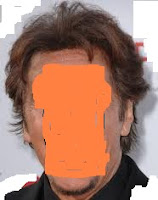Friday, January 21, 2011
Can Hairstyle be Protected with Copyright? Copyright Part 6
In the current issue of Entertainment Weekly (Jan. 28, 2011 #1139) on the last page titled “The Bullseye” [sic] is a picture of two pairs of people with similar hair styles the text asks “Are hairstyles protected by copyright laws?” This page is not inline and I can’t reproduce it here. This is another case study written as follow up to part 4 of my “What is Copyright?” series.
Does hairstyle pass the test of what can be protected by copyright?
Since hairstyle is not a government document it does not fall under that exemption. Even if the owners of the hair were government employees and their hair was cut and styled in connection with their job, I don’t think anyone would confuse hair with a government document.
Hairstyling is a creative act when based on a plan or idea. One pair of pictures, the styles looks as it were based on a plan and other it looks as if the people just rolled out of bed. For the later they can be no copyright because there is no creative act. For copyright protection a creative act must be followed with a fixed form. For example when one writes the words of thoughts, the writing is the fixed form. Since everyone’s head of hair is slightly different, I don’t think any hairstyle can have a fixed form. If someone claimed to work on the creation of a hairstyle, time spent is not a criterion for setting a fixed form.
If the hairstyle was created for a stage or film production, it may possibly be eligible for copyright protection based on the fact that the photograph of a character is a fixed form and can be protected. Also if the hairstyle is an important part of the character, if can be protected as part of the whole character.
Even if protection was claimed for the hairstyle, it would be hard to know exactly where the line is drawn for derivative, imitative, or parody styles which are allowed. Hair moves constantly and has no fixed form. One would have a hard time figuring out what is the fixed form. Would one hair in another place or a slightly different hair color qualify as a new work? There is no way to measure if the hair infringes on the first person’s claim.
Clowns can register a trademark for their face and hair and receive protection. See http://www.stuff4clowns.com/registry.html for more information.
To summarize – hairstyling is a creative act, but has no fixed form. Copyright protection can’t be claimed. This is only my opinion and I am not a lawyer.
============================================================
Today the 10,000th visitor visited this blog. Please continue to visit and share the link.
Subscribe to:
Post Comments (Atom)





No comments:
Post a Comment